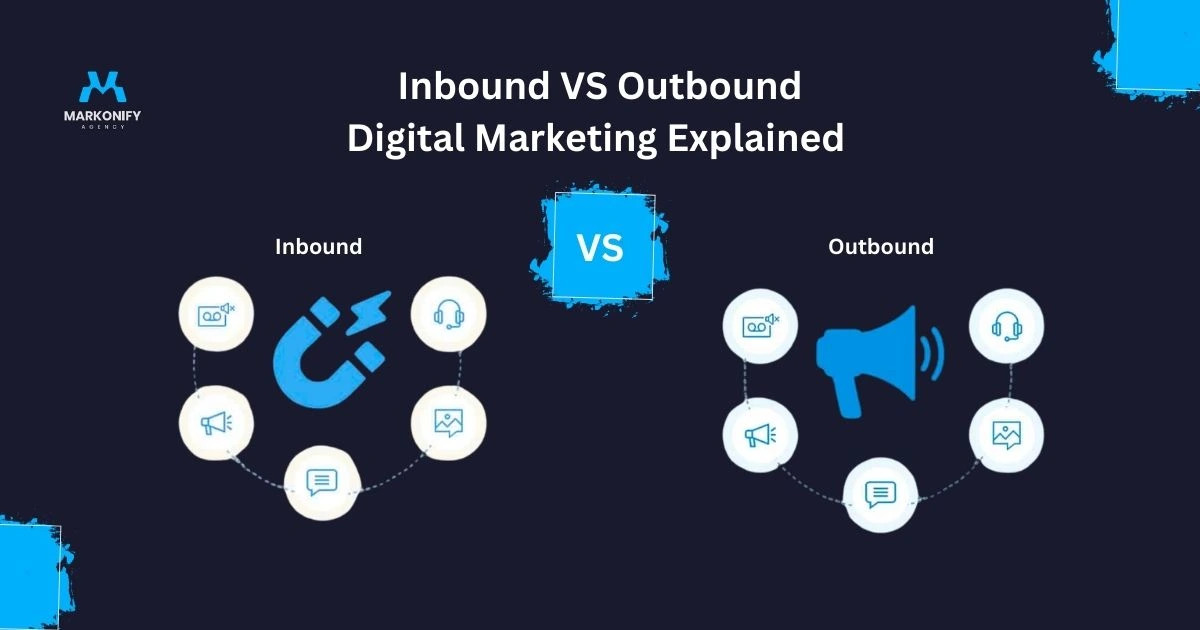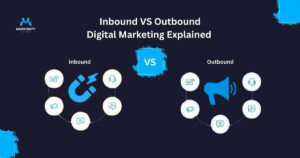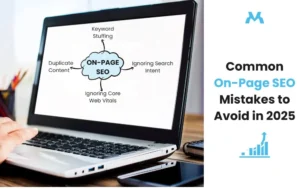How Core Web Vitals Impact Your Digital Marketing Efforts
Core Web Vitals are three specific performance metrics: Largest Contentful Paint (LCP), First Input Delay (FID), and Cumulative Layout Shift (CLS)that Google uses to measure the real-world user experience of a webpage. They directly affect search rankings, user engagement, and conversion rates.
According to Google’s Search Central, websites that meet Core Web Vitals thresholds are more likely to appear higher in search results and retain visitors longer. This makes them a critical SEO and digital marketing priority.
What Are Core Web Vitals and Why Do They Matter for SEO?
Core Web Vitals are part of Google’s Page Experience signals. They evaluate loading speed, interactivity, and visual stability, three factors that influence how users perceive and interact with your website.
In June 2021, Google made Core Web Vitals an official ranking factor. This means they’re no longer just “nice-to-have” optimization,s they’re non-negotiable for competitive SEO.
Entities to Mention:
- Metrics: Largest Contentful Paint, First Input Delay, Cumulative Layout Shift
- Tools: Google PageSpeed Insights, Lighthouse, Search Console
- Attributes: load time, responsiveness, visual stability, mobile-friendliness
- Industries: eCommerce, SaaS, media sites, B2B
- SRL Example: (Google) uses (Core Web Vitals) to (rank websites).
NLP Keywords & N-Grams:
- Unigrams: SEO, ranking, usability, speed
- Bigrams: web vitals, page speed, mobile experience
- Trigrams: improve core web vitals, Google ranking factor
Breaking Down the Three Core Metrics: LCP, FID, and CLS
- Largest Contentful Paint (LCP): Measures how quickly the largest piece of content (image, video, text block) loads in the viewport. A good LCP score is 2.5 seconds or faster.
- First Input Delay (FID): Measures the time between a user’s first interaction (click, tap, key press) and the browser’s response. The recommended FID is 100 milliseconds or less.
- Cumulative Layout Shift (CLS): Measures unexpected layout shifts during page load. A CLS score of 0.1 or less is considered good.
Why They Matter: These metrics directly influence bounce rate, engagement, and sales. Slow or unstable pages cause users to leave, hurting both organic traffic and conversion rates.
Example Data:
- A study by Deloitte found that a 0.1-second improvement in mobile site speed increased retail conversions by 8.4%.
- Google research shows that improving LCP can reduce bounce rates by up to 24%.
How Google Uses Web Vitals to Rank Websites
Google uses Core Web Vitals as part of its page experience ranking signal. Sites that meet “good” thresholds for all three metrics gain a competitive advantage in organic search.
- Core Web Vitals are measured via real-user data from the Chrome User Experience Report (CrUX).
- Pages that pass Web Vitals thresholds may outrank similar content with poor performance scores, even if the content quality is similar.
- Google combines Web Vitals with other factors like mobile-friendliness, HTTPS, and safe browsing.
- NER Phrases: Google Search Central, Chrome UX Report, Page Experience update
SRL Example: (Google) prioritizes (websites) with (good Core Web Vitals scores).
The Relationship Between UX, SEO, and Core Web Vitals
Good UX is now directly tied to SEO performance because Google measures user satisfaction through Core Web Vitals. A site with faster load times, responsive interactivity, and stable layouts will rank higher and convert more users.
User Experience (UX): Visitors are less likely to abandon fast, stable websites.
SEO: Search engines reward sites that users engage with positively.
Digital Marketing: Better UX means higher click-through rates, longer dwell time, and more conversions from both organic and paid channels.
Example:
If two e-commerce sites sell the same product, the one with faster LCP, lower FID, and stable CLS will usually:
1. Rank higher
2. Get more organic traffic
3. Generate more sales
Improving Core Web Vitals isn’t just a “technical SEO” task it’s a marketing strategy that affects all traffic sources.
How Core Web Vitals Affect Website Performance and Engagement
Core Web Vitals are a set of user experience metrics that measure loading speed (LCP), interactivity (FID), and visual stability (CLS). They directly influence how quickly users see content, how smoothly they can interact with it, and how stable it appears while loading.
Good scores in these metrics improve user satisfaction, search rankings, and conversion rates. Poor scores lead to higher bounce rates, lower engagement, and lost revenue.
Why Website Speed Directly Influences Bounce Rate
Website speed measured by Largest Contentful Paint (LCP) is one of the most critical drivers of bounce rate. If your LCP exceeds 2.5 seconds, users are far more likely to leave before interacting with the page.
Entity: Largest Contentful Paint (LCP), bounce rate, load time, conversion rate.
- Optimal Target: LCP ≤ 2.5 seconds (Google recommendation).
- Stat: Google research shows a jump from 1s to 3s load time increases bounce probability by 32%; 1s to 5s increases it by 90%.
- SRL Example: (User) exits (website) when (LCP is slow).
- NER: Google PageSpeed Insights, Chrome UX Report.
Why It Matters for Engagement:
- Slow LCP delays above-the-fold content, so users feel the site is “broken” or “unresponsive.”
- Fast-loading pages keep users engaged longer, increasing session duration and conversions.
Example:
An e-commerce retailer reduced LCP from 3.8s to 2.2s, resulting in:
- 21% lower bounce rate
- 15% increase in completed checkouts
Impact of Layout Stability on User Experience
Cumulative Layout Shift (CLS) measures visual stability during page load. A CLS score above 0.1 causes sudden movement of images, ads, or buttons, which leads to accidental clicks and user frustration.
Key Facts & Entities:
- Entity: CLS, layout stability, UX, accidental clicks.
- Optimal Target: CLS ≤ 0.1 for a stable interface.
- Stat: Sites with low CLS see up to 10% higher conversion rates due to fewer user errors.
- SRL Example: (Shifting layout) causes (user mis-click) which (lowers trust).
- NER: UX research reports, Google Web.dev.
Why It Matters for Engagement:
- A stable page keeps trust high users feel safe clicking CTAs.
- Reduces friction in the buying or sign-up process.
Example:
A news website reduced CLS from 0.22 to 0.08 by preloading ad spaces, leading to:
- 7% more ad clicks
- 12% more article completions
Mobile Optimization and Its Role in Core Web Vitals
Mobile optimization is essential because Google measures Core Web Vitals using mobile-first indexing. If your mobile site underperforms in LCP, FID, or CLS, it will harm both mobile and desktop rankings.
Key Facts & Entities:
- Entities: mobile responsiveness, touch target size, viewport settings, mobile load speed.
- Stat: 58.3% of global traffic comes from mobile devices (StatCounter, 2024).
- SRL Example: (Google) prioritizes (mobile-optimized sites) in (search rankings).
- NER: AMP, responsive frameworks, Mobile-Friendly Test.
Why It Matters for Engagement:
- Mobile users are less patient a 1-second delay in mobile load time can reduce conversions by 20%.
- Poor mobile performance can cause abandonment even if the desktop site is perfect.
Example:
A SaaS company improved mobile FID from 180ms to 75ms and CLS from 0.15 to 0.05.
Result:
- 22% more mobile sign-ups
- 30% longer session duration
Core Web Vitals are not just SEO metrics they are business performance drivers.
- Fast LCP reduces bounce rate and improves user satisfaction.
- Low CLS builds trust and prevents frustration.
- Strong mobile optimization ensures engagement across the largest traffic segment.
Measuring and Analyzing Core Web Vitals
To optimize for Core Web Vitals, you must measure, monitor, and analyze them regularly using accurate tools. Google evaluates real-world user data, so relying on the right testing methods is critical for improving SEO, engagement, and conversions.
Tools to Track Core Web Vitals: PageSpeed Insights, Lighthouse & More
The most reliable tools for measuring Core Web Vitals are Google PageSpeed Insights, Lighthouse, Chrome UX Report (CrUX), and Search Console’s Core Web Vitals report.
Key Entities & Tools:
- NER: Google PageSpeed Insights, Lighthouse, Chrome DevTools, CrUX, WebPageTest, GTmetrix.
- SRL Example: (Marketer) uses (PageSpeed Insights) to (measure LCP, FID, CLS).
- Optimal Use Case:
- PageSpeed Insights → field + lab data with actionable recommendations.
- Lighthouse → in-browser audits for lab testing and debugging.
- Search Console → large-scale tracking for your entire website.
- WebPageTest / GTmetrix → deeper analysis of load behavior and resource bottlenecks.
- PageSpeed Insights → field + lab data with actionable recommendations.
Example:
An online retailer ran monthly Lighthouse audits and reduced LCP from 3.6s to 2.1s, improving organic conversions by 18%.
Understanding Field Data vs Lab Data
Answer First:
Field Data reflects real-world user experiences from the Chrome UX Report, while Lab Data comes from simulated tests in controlled environments. Both are necessary to get a full performance picture.
Key Entities & Attributes:
- Entity: Field Data → real-user measurement, real device conditions.
- Entity: Lab Data → simulated environment, stable internet connection.
- NER: CrUX, Lighthouse simulations.
- SRL Example: (Google) collects (field data) from (Chrome browser users).
Why It Matters for Marketers:
- Field data is used by Google for ranking signals and direct SEO impact.
- Lab data helps diagnose issues before they affect real users.
Example:
A SaaS company saw perfect lab scores but poor field data due to slow 3G mobile connections in key markets. Optimizing mobile image compression improved both metrics and boosted engagement.
Key Metrics to Monitor and Their Thresholds
Google’s recommended Core Web Vitals thresholds are:
- Largest Contentful Paint (LCP) → ≤ 2.5 seconds
- First Input Delay (FID) → ≤ 100 milliseconds (moving to INP Interaction to Next Paint as of 2024)
- Cumulative Layout Shift (CLS) → ≤ 0.1
Key Entities & Attributes:
- Entity: LCP → main content load speed.
- Entity: FID / INP → responsiveness to first interaction.
- Entity: CLS → visual stability.
- NER: Google Search Central, Web.dev benchmarks.
- SRL Example: (Website) achieves (good user experience) when (Core Web Vitals meet thresholds).
Marketing Impact:
- Faster LCP → lower bounce rates.
- Low FID/INP → better interaction rates for CTAs.
- Stable CLS → higher trust and fewer accidental clicks.
Example Table for Quick Reference:
Metric | Good Score | Needs Improvement | Poor |
LCP | ≤ 2.5s | 2.5–4.0s | > 4.0s |
FID/INP | ≤ 100ms | 100–300ms | > 300ms |
CLS | ≤ 0.1 | 0.1–0.25 | > 0.25 |
Without accurate measurement, Core Web Vitals optimization becomes guess work. Combining field data for SEO alignment and lab data for debugging ensures you make evidence-backed improvements that impact both rankings and user engagement.
How to Optimize Your Website for Better Core Web Vitals
Improving your Core Web Vitals requires targeted optimizations for LCP, FID/INP, and CLS, backed by technical SEO best practices. Addressing these metrics boosts search rankings, reduces bounce rates, and increases conversions.
Improving Largest Contentful Paint (LCP) Effectively
To improve LCP, you need to load above-the-fold content quickly by optimizing images, server response times, and render-blocking resources.
Key Entities & Attributes:
- Entity: LCP → hero image, main text block, video thumbnail.
- NER: CDN (Cloudflare, Akamai), WebP, lazy loading.
- SRL: (Developer) reduces (LCP) by (compressing hero images and preloading fonts).
Actionable Steps:
- Optimize images → Use WebP/AVIF formats and compression.
- Use a CDN → Reduce latency for global users.
- Preload critical assets → Fonts, hero images, background visuals.
- Minimize render-blocking CSS/JS → Load only essential resources first.
- Server-side optimization → Upgrade hosting, use caching layers.
Example: An eCommerce store reduced LCP from 3.2s to 1.9s after preloading hero images and implementing WebP, increasing homepage conversions by 14%.
Reducing First Input Delay (FID) on Interactive Elements
To reduce FID, minimize main-thread blocking JavaScript and ensure fast event handling for buttons, forms, and menus.
Key Entities & Attributes:
- Entity: FID / INP → button click delay, form field interaction.
- NER: React, Angular, JavaScript bundle size, Web Workers.
- SRL: (Site) improves (FID) by (splitting JavaScript bundles and deferring non-critical scripts).
Actionable Steps:
- Split JavaScript bundles → Avoid large monolithic scripts.
- Defer non-critical scripts → Only load essentials on first paint.
- Use Web Workers → Offload heavy computations from the main thread.
- Minimize third-party scripts → Remove unused trackers or widgets.
- Preconnect to APIs → Reduce latency for first interaction.
Example: A SaaS platform reduced FID from 250ms to 85ms after deferring analytics scripts and using Web Workers for data processing.
Minimizing Cumulative Layout Shift (CLS) for Visual Stability
To minimize CLS, reserve space for all elements before they load and avoid dynamic content shifts.
Key Entities & Attributes:
- Entity: CLS → unexpected element movement, layout shift score.
- NER: aspect-ratio CSS, ad slot placeholders.
- SRL: (Designer) prevents (CLS) by (adding fixed height to images and reserving space for ads).
Actionable Steps:
- Set width/height attributes for images and videos.
- Reserve ad slot space to prevent push-down shifts.
- Avoid inserting content above existing content except for user-triggered actions.
- Use CSS aspect-ratio for media consistency.
- Preload fonts to prevent text reflow.
Example: A news website reduced CLS from 0.21 to 0.05 after fixing ad placeholders and adding image size attributes, improving scroll engagement by 9%.
Technical SEO Best Practices for Core Web Vitals
Core Web Vitals improvements work best when paired with solid technical SEO practices for crawling, indexing, and content delivery.
Key Entities & Attributes:
- Entity: Technical SEO → XML sitemaps, mobile-first indexing, HTTPS.
- NER: Google Search Console, schema.org, robots.txt.
- SRL: (SEO team) improves (rankings) by (combining CWV fixes with schema markup and mobile optimization).
Best Practices:
- Ensure mobile-first readiness → Most CWV measurements are mobile-based.
- Use HTTPS → Security is a ranking factor and builds trust.
- Implement schema markup → Enhance SERP appearance and CTR.
- Optimize crawl budget → Reduce unnecessary indexed pages.
- Monitor CWV in Search Console → Track improvements and spot issues early.
Example: A B2B site saw a 22% organic traffic boost after combining CWV optimization with structured data and mobile-first enhancements.
Core Web Vitals optimization isn’t just a technical taskit’s a marketing strategy. Faster loads, smoother interactions, and stable layouts improve user satisfaction, Google rankings, and conversion rates.
Core Web Vitals and Digital Marketing Strategy Alignment
Core Web Vitals directly influence conversion rates, ad performance, and customer retention by improving user experience, reducing friction, and enhancing trust signals. Aligning your SEO and marketing strategy with CWV optimization turns technical performance gains into measurable business growth.
How Faster Pages Boost Conversion Rates
A 1-second improvement in page load speed can increase conversions by 7% or more (Google & Deloitte data). Faster pages reduce abandonment, especially in checkout flows and lead capture forms.
Key Entities & Attributes:
- Entity: Conversion rate → checkout completion, lead form submission.
- NER: Shopify, WooCommerce, HubSpot forms.
- SRL: (Brand) increases (conversion rate) by (reducing LCP and optimizing critical path rendering).
Actionable Impact:
- Reduce load time below 2.5 seconds to stay within Google’s “Good” LCP threshold.
- Preload key scripts and assets for critical landing pages.
- A/B test pages pre- and post-CWV improvements to measure ROI.
Example: An eCommerce brand improved LCP from 3.1s to 1.8s, leading to a 12% lift in sales and a 15% drop in cart abandonment.
Core Web Vitals’ Impact on Ad Campaign Performance
Slow-loading pages waste paid ad budgets because users bounce before engaging. Optimizing CWV ensures that PPC traffic, social ads, and remarketing clicks convert more effectively.
Key Entities & Attributes:
- Entity: Ad campaign performance → CTR, conversion rate, cost per acquisition (CPA).
- NER: Google Ads, Facebook Ads, LinkedIn Ads.
- SRL: (Advertiser) reduces (CPA) by (optimizing mobile page speed and CLS).
Actionable Impact:
- Improve mobile performance for paid traffic landing pages.
- Ensure visual stability (low CLS) to keep ad-driven visitors focused on the CTA.
- Use post-click optimization alongside ad creative testing.
Example: A SaaS company cut bounce rates from paid traffic by 18% and reduced CPA by 11% after fixing mobile FID issues.
Leveraging Core Web Vitals for Better Customer Retention
A site that feels smooth, stable, and quick keeps customers returning. Good CWV scores strengthen brand trust and encourage repeat engagement.
Key Entities & Attributes:
- Entity: Customer retention → repeat purchase rate, returning visitors.
- NER: Net Promoter Score (NPS), churn rate, loyalty program metrics.
- SRL: (Business) boosts (retention) by (delivering consistently fast, stable browsing experiences).
Actionable Impact:
- Ensure returning visitors experience consistent speedmonitor CWV over time, not just once.
- Combine UX optimization with personalization for higher engagement.
- Reduce friction points in account login, checkout, and content loading.
Example: An online publication increased subscriber renewals by 9% after reducing CLS and improving LCP across returning user sessions.
Core Web Vitals are no longer just a “technical SEO” concernthey’re a digital marketing performance lever. Faster, more stable pages turn clicks into customers and keep them coming back.
Real-World Case Studies and Brand Examples
Answer First:
Brands across industries have proven that Core Web Vitals (CWV) optimization directly improves business results, from boosting eCommerce sales to increasing B2B lead flow. However, poor or incomplete implementation can stall performance gains.
How eCommerce Brands Improved Sales with Better Web Vitals
E-commerce brands that improved LCP, FID, and CLS saw double-digit increases in sales due to faster checkout and reduced cart abandonment.
Key Entities & Attributes:
- Entity: eCommerce → product pages, checkout flow, cart abandonment.
- NER: Amazon, Shopify Plus, Zalando, ASOS.
- SRL: (Retailer) increases (sales) by (reducing LCP and optimizing checkout scripts).
Example Case:
- ASOS reduced LCP from 3.4s to 1.9s → +12% conversion rate and -8% bounce rate on mobile.
- Zalando optimized CLS by preloading image dimensions → +15% add-to-cart rate.
Tactics Used:
- Preloaded hero images and product thumbnails.
- Deferred non-critical JavaScript.
- Implemented server-side rendering for faster first contentful paint.
B2B Sites That Increased Organic Rankings After Optimization
B2B brands saw significant SEO visibility gains after CWV improvements, with higher rankings for competitive keywords and more leads.
Key Entities & Attributes:
- Entity: B2B websites → landing pages, lead forms, demo requests.
- NER: HubSpot, Salesforce, SEMrush.
- SRL: (B2B platform) improves (rankings) by (reducing CLS and improving mobile FID).
Example Case:
- HubSpot improved mobile FID from 180ms to 50ms → 9% higher organic lead submissions.
- SEMrush optimized LCP to under 2s → gained +22% organic traffic for high-intent keywords.
Tactics Used:
- Minified and combined CSS.
- Used lightweight form scripts.
- Reduced third-party tracking scripts.
Lessons Learned from Poor Core Web Vitals Implementation
Incomplete or rushed CWV fixes can waste resources and even harm performance if they ignore real-user data.
Key Entities & Attributes:
- Entity: CWV implementation → performance regression, poor field data results.
- NER: Google Search Console, Chrome UX Report.
- SRL: (Company) fails to (improve CWV) due to (focusing only on lab data and ignoring mobile users).
Example Case:
- A news site improved lab test scores but ignored mobile field data, resulting in no SEO gains.
- Another retailer removed third-party scripts but didn’t address render-blocking CSS, leaving LCP unchanged.
Common Mistakes:
- Relying solely on lab data instead of field data from real users.
- Ignoring mobile optimization in favor of desktop.
- Overlooking CLS from dynamic ad placements.
Real-world data proves that CWV optimization is not just a technical exercise’s a business growth driver. Success requires measuring the right data, targeting user-impactful fixes, and avoiding shortcuts.
Final Thoughts: Why Digital Marketers Can’t Ignore Core Web Vitals
Summing Up the SEO and UX Connection
Core Web Vitals (CWV) are no longer just a technical SEO checklistthey are a direct bridge between search rankings and user experience.
Google’s ranking algorithm prioritizes websites that load fast, respond quickly, and remain visually stable. From an SEO perspective, strong CWV scores can be the difference between being on page one or buried in search results. From a UX perspective, these metrics reduce friction, improve trust, and boost engagement.
For example, research from Google shows that sites improving LCP by 0.1s can increase conversions by up to 8%. This overlap between SEO and UX means that optimizing CWVs is both a marketing and a customer satisfaction win.
Future-Proofing Your Website for Google’s Updates
Google’s updates are moving toward rewarding user-first experiences, making CWV compliance a long-term necessity.
Over the last few years, Google has expanded the Page Experience signal to include mobile responsiveness, HTTPS security, and safe browsing alongside CWVs. This trend will continue, with even more UX-related signals expected to influence rankings. By building a fast, stable, and interactive site today, you protect your organic visibility against future updates.
Future-proofing isn’t just about meeting today’s thresholds but also about setting up a monitoring and improvement framework so your site adapts quickly when Google changes its metrics or thresholds.
Where to Start: Audit, Fix, and Monitor Continuously
The fastest path to better Core Web Vitals is audit → fix → monitor and repeat regularly.
- Audit: Use Google Search Console, PageSpeed Insights, or Lighthouse to identify issues with LCP, FID, and CLS. Segment reports by mobile and desktop.
- Fix: Prioritize high-impact optimizations first optimize images for LCP, reduce third-party scripts for FID, and add size attributes to media for CLS.
- Monitor: Set up automated tracking using tools like WebPageTest, GTmetrix, or Chrome User Experience Report (CrUX). Watch for score drops after new content uploads or site redesigns.
Digital marketers who treat CWVs as an ongoing marketing KPI alongside traffic, conversions, and engagement will have a competitive edge in SEO rankings, ad performance, and customer retention.
Where to Start: Audit, Fix, and Monitor Continuously
The fastest path to better Core Web Vitals is audit → fix → monitor and repeat regularly.
- Audit: Use Google Search Console, PageSpeed Insights, or Lighthouse to identify issues with LCP, FID, and CLS. Segment reports by mobile and desktop.
- Fix: Prioritize high-impact optimizations first optimize images for LCP, reduce third-party scripts for FID, and add size attributes to media for CLS.
- Monitor: Set up automated tracking using tools like WebPageTest, GTmetrix, or Chrome User Experience Report (CrUX). Watch for score drops after new content uploads or site redesigns.
Digital marketers who treat CWVs as an ongoing marketing KPI alongside traffic, conversions, and engagement will have a competitive edge in SEO rankings, ad performance, and customer retention.
Core Web Vitals & Digital Marketing – Common Questions Answered
Are Core Web Vitals a Ranking Factor in 2025?
Yes. Google officially includes Core Web Vitals in its ranking algorithm as part of the Page Experience update.
Google considers Largest Contentful Paint (LCP), First Input Delay (FID), and Cumulative Layout Shift (CLS) as user experience signals. While they’re not the only ranking factors, improving them can help competitive keywords rank higher, especially in markets where multiple sites have similar relevance and authority.
What’s a Good Core Web Vitals Score?
A good CWV score means meeting Google’s recommended thresholds:
- LCP: ≤ 2.5s
- FID: ≤ 100ms
- CLS: ≤ 0.1
Do Core Web Vitals Affect Mobile and Desktop Equally?
They apply to both, but mobile CWV scores are usually harder to optimize due to network speed and device constraints.
How Often Should I Monitor Web Vitals?
Check monthly for stable sites, weekly during major changes, and daily for high-traffic eCommerce or news portals.
Can Poor Web Vitals Hurt My Paid Ads Performance?
Yes. Poor CWVs can lower Quality Scores in Google Ads and increase bounce rates, wasting ad spend.




